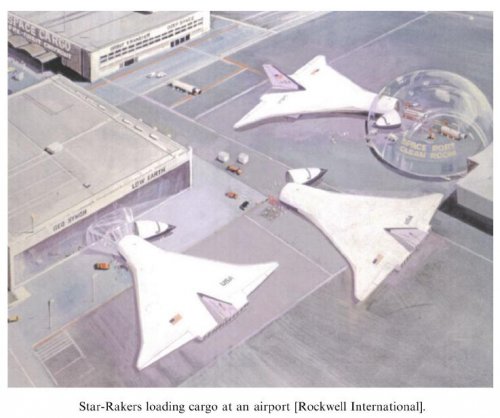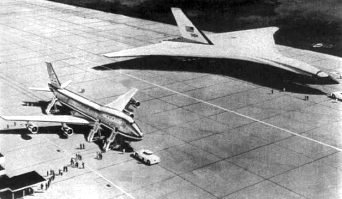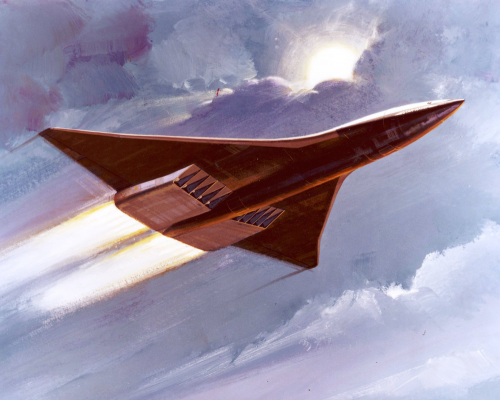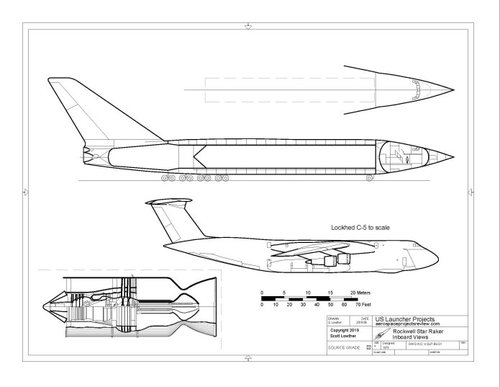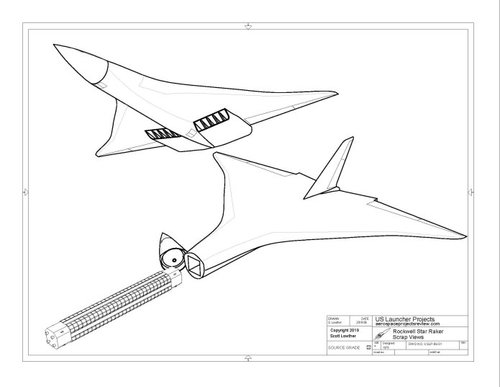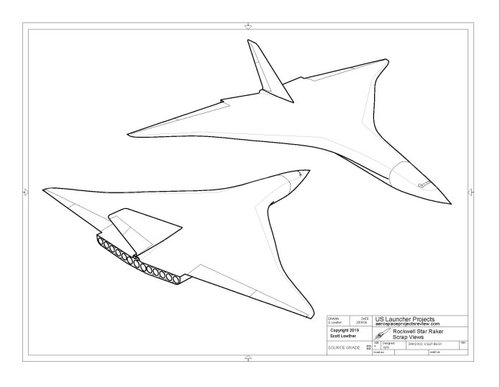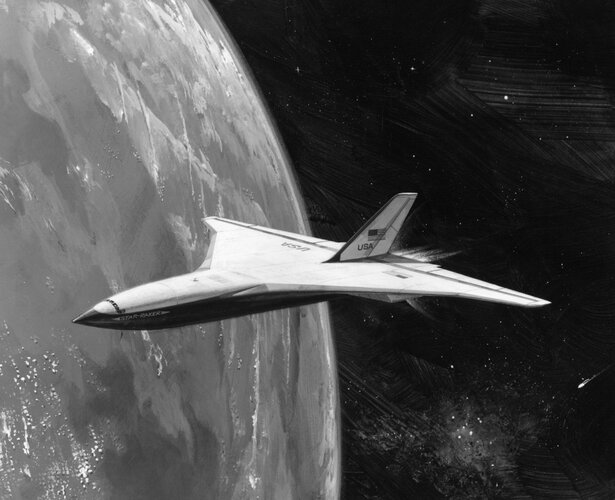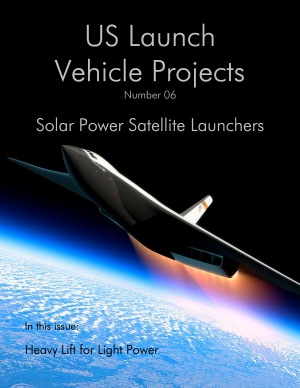- Joined
- 26 May 2006
- Messages
- 34,928
- Reaction score
- 15,798
Hi,
from Astronautix site and from the book Rocketing Into The Future,here is
the Rockwell Star-Raker HTHL SSTO;
http://www.astronautix.com/lvs/staraker.htm
from Astronautix site and from the book Rocketing Into The Future,here is
the Rockwell Star-Raker HTHL SSTO;
American winged orbital launch vehicle. Rockwell International's Star-raker was an enormous 1979 heavy-lift ramjet/rocket horizontal takeoff/horizontal landing single-stage-to-orbit concept capable of atmospheric cruise and powered landing for maximum operational flexibility.Rockwell studies in the late 1960's indicated that Mach 6 turboramjets would provide significant advantages to horizontal takeoff/horizontal landing (HTHL) two-stage-to-orbit (TSTO) designs provided were only marginal benefits for single-stage-to-orbit (SSTO) vehicles. However by the late 1970's, Rockwell believed that new materials technologies, combined with a wet wing design, would make HTHL SSTO possible. The lower wing loading of the design would make surface temperatures during reentry several hundred degrees lower than the Space Shuttle. Rockwell asserted that the Star-raker, using advanced airbreathing engines, could carry double the payload for the same gross liftoff mass as Boeing's Reusable Aerodynamic Space Vehicle all-rocket HTHL SSTO concept. However Star-raker's dry mass would be 45% higher than the Boeing design and the vehicle would be exposed to a more severe aerodynamic heating environment..
Rockwell investigated the operational issues and requirements for launching 1600 tonnes of payload into low Earth orbit per day to support construction of solar power satellites. The baseline concepts were Boeing's rocket-powered VTVL TSTO (400t payload capability) and the Star-raker turbofan/air-turbo-exchanger/ramjet HTHL SSTO (100t payload). Although the airbreathing HTHL SSTO concept would require some advanced technologies, it appeared to be better suited for high flights rates (16/day) than the vertically-launched TSTO.
The VTVL vehicle would require ten launch pads requiring extensive refurbishment between missions, to meet the launch rate requirement of 4 flights per day from the Kennedy Space Center. Two high-bay Vertical Assembly Buildings would also be required as opposed to two aircraft maintenance type buildings for Starraker. The turnaround time for the HTHL SSTO (1.8 days) would be one-third that for the VTVL TSTO (5.5 days), primarily because the latter would land at sea and the requirement for mating and stacking two extremely heavy stages. On the other hand the risk of recovery damage was considerably higher than for aircraft landing.
For the HTHL, a single-runway air base would support an entire fleet of 30 Star-rakers. The VTVL TSTO launch range would have to be 850 square kilometers in area to accommodate a fleet of 22 vehicles and the launch noise they generated (120db at 13km, vs. <120db at 1km for the HTHL SSTO).
Rockwell estimated the cost per kilogram of payload to low earth orbit would be $22-$33 in 1978 dollars. The aircraft was to be compatible with C-5A Galaxy cargo handling facilities and airports (2440-4270m runways). Each of the ten turboramjets would have a thrust of 623 kN, and each of the three shuttle SSME-type engines, 4750 kN. The vehicle would have 1826 tonnes of liquid oxygen and hydrogen loaded at takeoff.
LEO Payload: 100,000 kg (220,000 lb) to a 556 km orbit at 28.00 degrees. Boost Propulsion: 3 x LOX/LH2 rocket engines + 10 x turboramjets.
http://www.astronautix.com/lvs/staraker.htm

